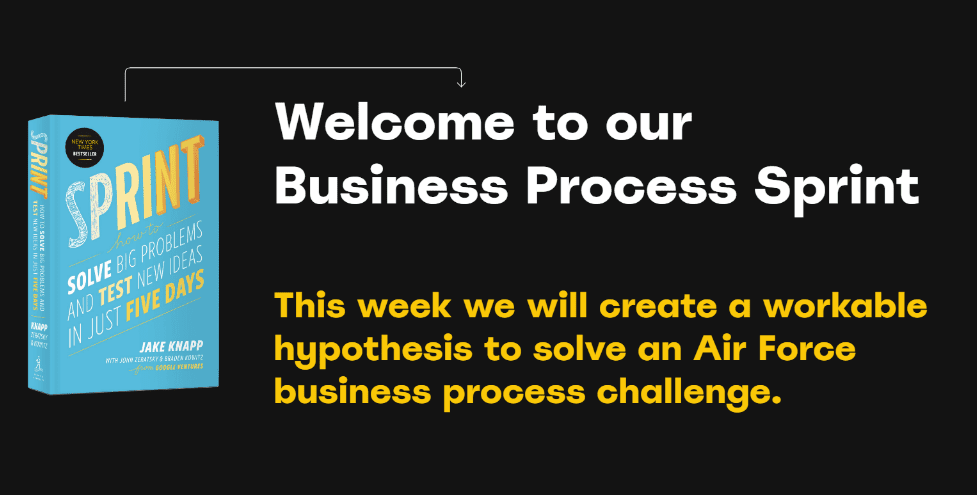
The Air Force Research Lab’s 711th Human Performance Wing was dissatisfied with its software acquisition process, and felt it was time for a change. The scientists and engineers were hindered by the time and paperwork required to update software, and believed they should establish a business process that would allow more autonomy, free up the IT staff, and enable autonomous management of their own digital needs.
The Wing turned to Wright Brothers Institute, whose proven expertise in facilitating workshops and tech Sprints is well known. While not a traditional "prototyping" sprint, WBI leveraged best practices from author Jake Knapp and agile software design approaches, combined with the immediate needs of the AFRL team, to plan a three-day Sprint, whose stated goal was to develop “a plan that can be presented to leadership that is likely to succeed that can establish a proof of concept with sprint funding.” It was clear that to develop such a plan, multiple perspectives and experienced, powerful facilitation methodologies would be required to move the group to a single, actionable concept that could be presented and accepted by AFRL leadership.
The sprint focused on mapping the problem space, brainstorming solutions, and developing actionable hypotheses. At the beginning of each sprint day, introductions emphasized the roles of the Deciders and Sprint Leader(s). Stakeholders were acknowledged. Guidelines such as stating that collaboration is needed, the responsibilities of each participant, avoiding long debates and sales pitches, and being present in the discussion (no email/messaging) was put in place. Miro, a software tool, was used to capture the entire sprint.
Remote attendees were enabled to participate, while all of the data was captured in Miro. Participants started by identifying the negative and disparate elements of the process as it exists today. For sprints to be productive, it’s important to stay on disciplined. A “Complaining Session,” during which stakeholders living within the area were heard devoted some time to address major pain points without sacrificing the time to examine solutions. Through several exercises, five root causes were discussed as serious roadblocks in the software approval/acquisition process. Day two focused on positive attributes of the current and/or future state. Working to distill the most critical solutions, the day ended with a "napkin sketch" of the most inspired concept. Day three added early road mapping attributes to the concept including metrics for success, a high-level risk analysis, and a team alignment exercise. Many attendees commented on the efficiency of the sprint and were re-energized to tackle a problem that has long plagued AFRL and the Wing.
A presentation to leadership was accomplished, with concept validation expected in the coming months. If the concept looks promising, leadership may decide to implement across the enterprise.
